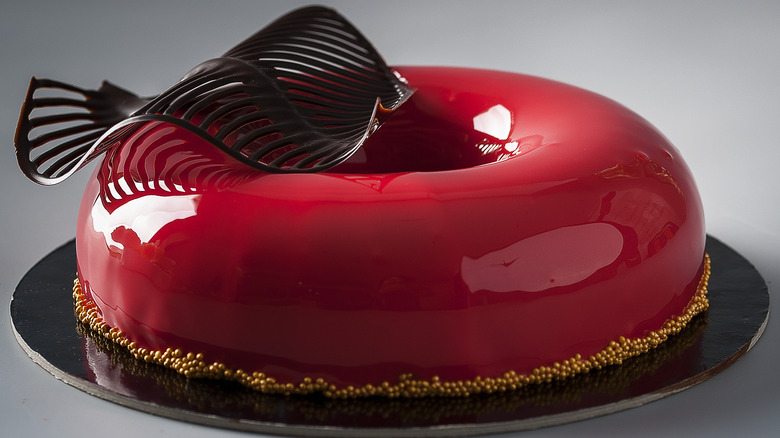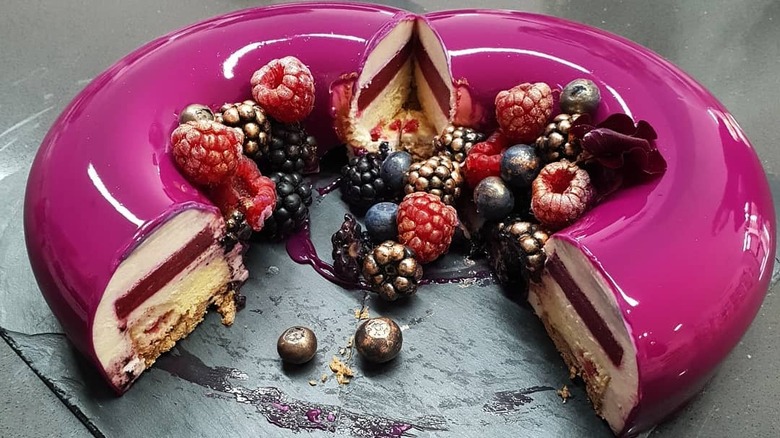How Mirror Glaze Cakes Took Over The Dessert World
Let's set the scene: Instagram, 2016. The internet fumed over the loss of the chronological feed. Selena Gomez made international news when she posed with a bottle of Coke. And suddenly, glittering, glossy mirror glaze cakes were everywhere.
Mirror glazes use gelatin sheets to achieve a flawless shine. Bakers combine the gelatin with ingredients like glucose syrup, chocolate, and sweetened condensed milk. To make that jaw-dropping reflective finish, the gelatin mixture is poured over a chilled cake so it sets. Generally, the cake itself is covered in icing or mousse first to provide a smooth surface — but the real trick to a mirror glaze is getting the temperature just right.
It's pretty easy to understand why mirror glaze cakes became popular. With bright colors, marbled patterns, and a finish you'd expect from a jewelry store, not a pastry shop, it was only a matter of time before they took off on Instagram. But even by the time mirror glaze cakes started inundating our feeds, the technique had been around for decades. It originated with entremets, chic French pastries with layers of confections — like sponge cake, jellies, and nuts — encased in a smooth mousse and coated in glaze. French pastry chefs had used mirror glazes to seal off their creations and give them a stunning shine for 30 or 40 years before galaxy cakes became a viral hit.
From French bakeries to Insta feeds
But the technique didn't become widely known until Russian pastry chef Olga Noskova popularized the pretty cakes. Noskova started sharing her creations on Instagram after learning the mirror glaze technique from a baking class. Originally, her posts were for friends and family; soon, they started to garner more attention. On May 12, 2016, Noskova woke up to find that her account had exploded, going from a respectable 34,000 followers to 300,000 overnight. Her work had caught the attention of BuzzFeed and Bored Panda — and soon, major international news outlets were reporting on her creations.
Noskova kept the details of her recipe quiet, but Redditors quickly uncovered similar techniques. YouTube videos, recipes, and copycat Instagram accounts followed. Later in 2016, "The Great British Baking Show" ended its premiere episode with mirror glazes as the showstopper challenge.
While Noskova didn't invent mirror glazes, she did come up with innovative new ways to use them. In an interview with the South China Morning Post, she stressed the importance of experimentation. "I am influenced by a strong desire in experimenting with colours, fillings, decoration, and flavours of my cakes ... True, you need to read the information ... but it's also important to self-educate." Next time you learn a new technique, take her advice and challenge yourself to experiment. You could end up with a baking viral sensation that rocks the pastry world.

